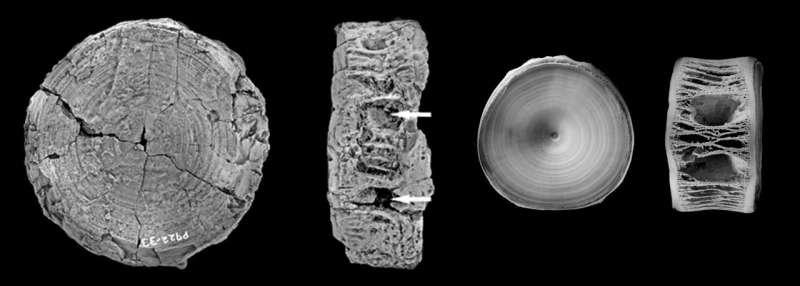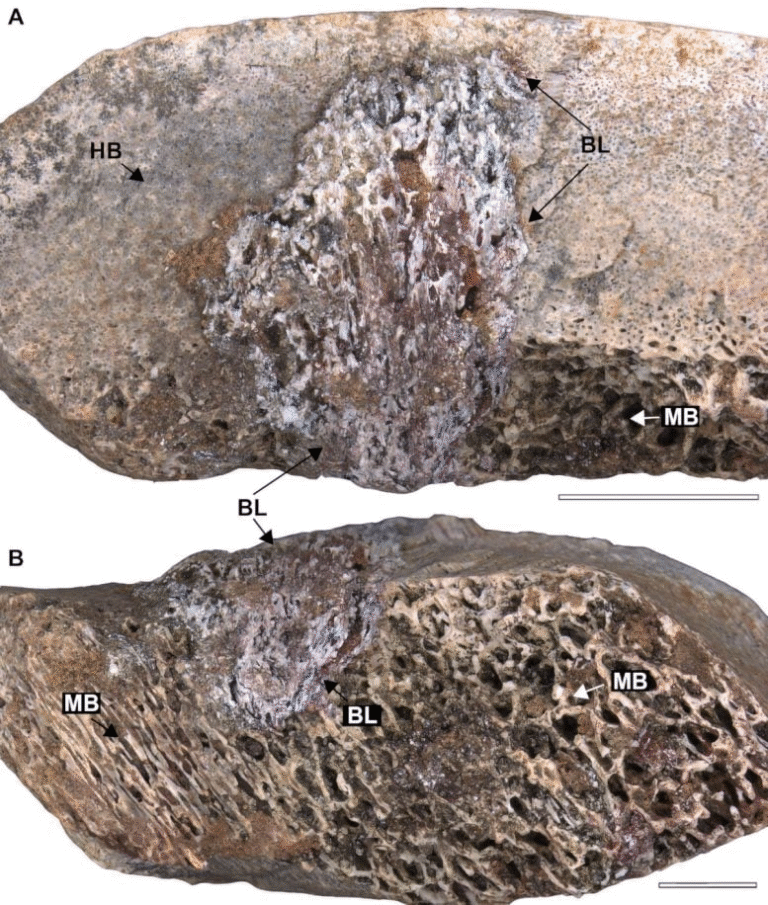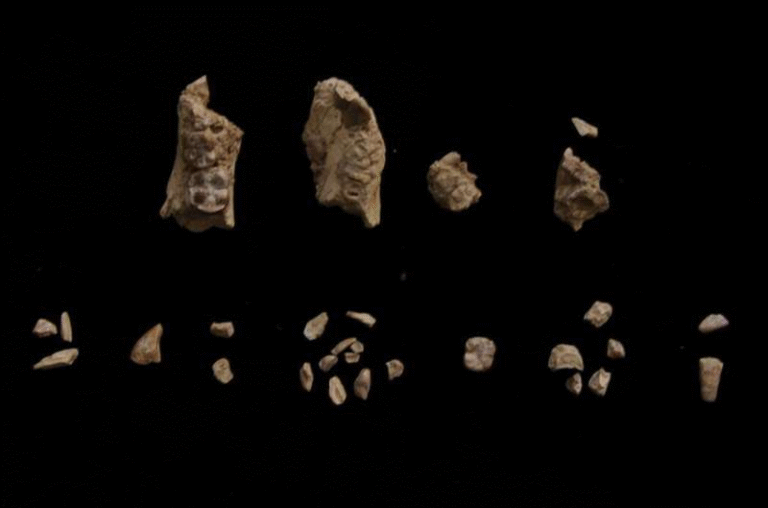Ancient Shark Fossil Pushes Back the Origin of Giant Predators by 15 Million Years

A remarkable discovery from northern Australia has rewritten part of shark evolutionary history. A team of researchers from Stanford University, Columbus State University, and several international institutions has identified a massive, extinct lamniform shark that lived around 115 million years ago—a finding that moves back the origin of gigantic sharks by 15 million years earlier than scientists once thought.
The study, published in Communications Biology, is titled “Early gigantic lamniform marks the onset of mega-body size in modern shark evolution.” It provides the earliest known evidence of a large-bodied lamniform shark, a group that includes modern giants like the Great White (Carcharodon carcharias) and the Shortfin Mako (Isurus oxyrinchus).
The Discovery
The fossilized remains—specifically vertebral centra (the circular bones that make up the spine)—were collected decades ago from the Darwin Formation in the Northern Territory of Australia. These specimens, labeled NTM P922-29 and NTM P922-32, sat unstudied in a museum collection until researchers led by Dr. Mohamad Bazzi re-examined them using modern analytical techniques.
By carefully comparing these fossil vertebrae to those of living lamniform sharks, the team estimated that the ancient shark measured between 6 to 8 meters (about 19.5 to 26.3 feet) in length and weighed over 3 metric tons. That’s roughly the size of a present-day Great White, but this shark lived 115 million years ago, during the Early Cretaceous period—a time when dinosaurs still dominated the land and ocean ecosystems were undergoing massive diversification.
These vertebrae are also enormous. One fossilized centrum measured 12.5 centimeters in diameter, rivaling or exceeding those of known modern sharks of similar length.
How the Researchers Estimated the Size
Until now, there was no standardized method for estimating the body size of extinct lamniform sharks using vertebral fossils. Dr. Mike Newbrey and colleagues at Columbus State University addressed that by developing a dataset of vertebral measurements from ten living lamniform species with known body lengths.
The team applied several regression models—mathematical relationships between vertebral diameter and total body length—to the fossil data. They built multiple models to account for differences in shark species. For example:
- Model I used all ten species in their dataset.
- Model II excluded species of Alopias (thresher sharks).
- Model III excluded both Alopias and Cetorhinus maximus (the basking shark) to eliminate outliers with unusual body proportions.
Each model produced slightly different results, but all pointed to a creature between 5.8 and 8 meters long, depending on assumptions. Even conservative estimates confirmed that this was a gigantic shark—the earliest one known in the fossil record.
Why This Changes the Timeline
Before this study, scientists thought that giant lamniform sharks appeared during the Late Cretaceous period (about 100.5 to 66 million years ago). That period saw species evolving for pelagic lifestyles—sharks that hunted in the open ocean and developed streamlined bodies for fast swimming.
This new research, however, shows that the first mega-bodied lamniforms evolved much earlier, in the Early Cretaceous (145–100 million years ago), during a cooler climatic phase. This means that large body size wasn’t just an adaptation to warm pelagic environments. Instead, it might have been a response to cooler waters, helping these sharks maintain body temperature or exploit unoccupied ecological niches.
The Darwin Formation shark, a cardabiodontid, represents a family of lamniforms known mostly from teeth and limited skeletal remains. The discovery suggests that cardabiodontids may have pioneered gigantism long before later lamniform giants like Cretoxyrhina or Otodus megalodon appeared.
Ecological and Evolutionary Insights
The researchers speculate that these ancient sharks may have used their large size to survive in colder, high-latitude seas. Being large would have allowed them to retain heat more efficiently (a concept known as mesothermy)—similar to how modern Great Whites can regulate their internal temperature.
They also could have been apex predators, filling a role similar to what large lamniforms do today: hunting smaller fish, marine reptiles, and possibly other sharks. Their presence in the Darwin Formation, which represents neritic (coastal) and epeiric (shallow sea) environments, indicates that early lamniform giants weren’t restricted to deep, open-ocean habitats.
The study concludes that the evolution of gigantism in lamniforms likely didn’t occur gradually over tens of millions of years. Instead, it may have happened in rapid bursts, when environmental and ecological conditions favored the rise of large predators.
Rediscovering Forgotten Fossils
Interestingly, these fossils weren’t newly excavated. They were collected in the 1980s, cataloged, and then left unstudied for decades. Only when researchers like Dr. Bazzi and Dr. Newbrey re-analyzed them with modern statistical tools did their true significance become apparent.
This highlights how museum collections—even ones decades old—can still yield groundbreaking discoveries. Advances in data analysis and new research questions often turn forgotten specimens into sources of fresh insight.
Why Lamniform Sharks Are So Fascinating
To understand why this discovery matters, it helps to know what lamniform sharks are. The order Lamniformes includes some of the most famous and formidable sharks alive today, such as:
- Great White Shark (Carcharodon carcharias) – Reaches up to 6 meters in length, an apex predator across temperate oceans.
- Shortfin Mako (Isurus oxyrinchus) – The fastest shark in the ocean, capable of speeds over 70 km/h.
- Salmon Shark (Lamna ditropis) and Porbeagle (Lamna nasus) – Both exhibit regional endothermy, allowing them to hunt in cold waters.
- Basking Shark (Cetorhinus maximus) – The second-largest living fish, though it’s a gentle filter feeder rather than a predator.
These sharks share several distinctive traits: fusiform bodies, large gill slits, powerful jaws, and in many cases, regional endothermy—the ability to keep parts of their bodies warmer than surrounding water. This physiological adaptation has allowed them to thrive in various climates and occupy top positions in marine food webs.
Understanding when and how such traits evolved helps paleontologists connect ancient species like the cardabiodontids to their modern descendants.
Implications for Shark Evolution
The discovery of this Early Cretaceous giant changes how scientists view the evolutionary trajectory of lamniform sharks. It implies that gigantism appeared much earlier than previously thought and possibly independently in different lineages.
It also provides a new method for estimating body size from incomplete fossils—a major step forward. Because shark skeletons are made mostly of cartilage, complete specimens are rare. Teeth are abundant in the fossil record, but vertebral centra are less common and harder to interpret. Having a statistically calibrated reference dataset from modern sharks gives paleontologists a more reliable way to reconstruct body size from fossilized remains.
The study also opens up new questions:
- What environmental pressures triggered early gigantism?
- Did these sharks evolve large size to hunt certain prey or survive colder waters?
- Were there other, now-extinct, lineages that reached similar sizes even earlier?
The answers will depend on future fossil discoveries and the continued re-examination of existing museum specimens using improved analytical methods.
The Human Side of the Discovery
Alongside the scientific breakthrough, the project also nurtured the next generation of researchers. Tatianna Blake, an alumna of Columbus State University, contributed to the study as a co-author. Her undergraduate research, guided by Dr. Newbrey, evolved into a professional scientific publication.
Her experience demonstrates how student involvement in faculty-led research can lead to genuine scientific contributions—and sometimes, to major discoveries like this one.
Looking Ahead
The fossil analysis not only adds a new chapter to the story of shark evolution but also provides a foundation for future studies. The same methods could be applied to other fragmentary lamniform fossils worldwide, possibly revealing additional examples of early gigantic sharks.
It’s a reminder that evolution’s story isn’t static—it’s being rewritten all the time, sometimes by fossils that have been waiting quietly in museum drawers for decades.
Research Reference:
Bazzi, M., Siversson, M., Wintner, S., Newbrey, M. G., Payne, J. L., Campione, N. E., Roberts, A. J., Natanson, L. J., Hall, S., Blake, T., & Kear, B. P. (2025). Early gigantic lamniform marks the onset of mega-body size in modern shark evolution. Communications Biology. https://doi.org/10.1038/s42003-025-08930-y





